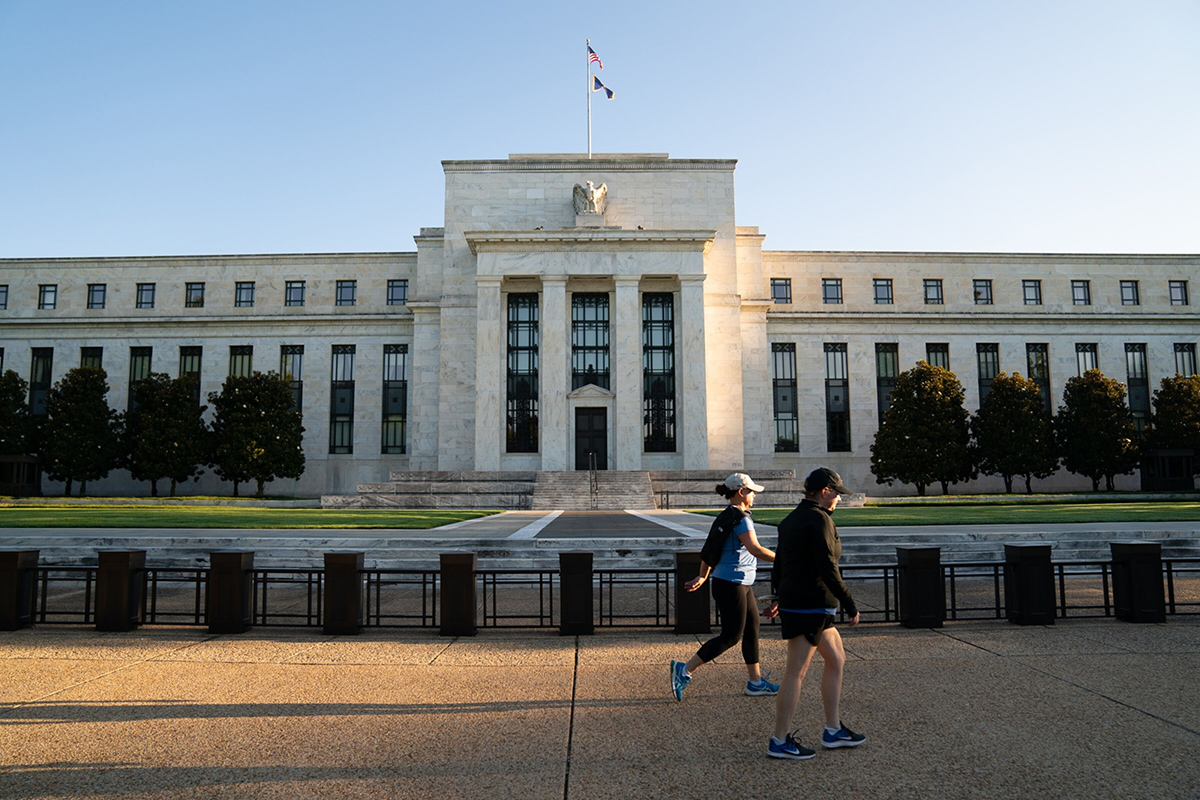 Joggers pass the Marriner S. Eccles Federal Reserve building in Washington, D.C.
Joggers pass the Marriner S. Eccles Federal Reserve building in Washington, D.C.
Federal Reserve policymakers at their most recent meeting united around a strategy to "proceed carefully" on future interest-rate moves and base any further tightening on progress toward their inflation goal.
"All participants agreed that the committee was in a position to proceed carefully and that policy decisions at every meeting would continue to be based on the totality of incoming information," according to minutes of the Federal Open Market Committee (FOMC) meeting on October 31 and November 1.
Recommended For You
U.S. central bankers held the benchmark lending rate in a range of 5.25 percent to 5.5 percent for the second straight time, despite a run of data showing strong consumption and hiring, which fueled overall economic growth.
The minutes show the committee putting an emphasis on how higher interest rates were starting to squeeze households and businesses. "There is a dovish tilt on the committee," said Anna Wong, Bloomberg Economics' chief U.S. economist. "They want to sit there and let the tight level of credit conditions slow economic activity."
Staff reports cited tighter lending standards across all consumer loan categories in the third quarter and rising delinquency rates. "Several participants noted that an increasing number of district businesses were reporting that higher interest rates were affecting their businesses or that firms were increasingly cutting or delaying their investment plans because of higher borrowing costs and tighter bank lending conditions," the minutes said.

There was limited reaction in bonds and stocks following the release of the Fed minutes. Yields on 10-year Treasuries were up 1 basis point (bps), to about 4.42 percent, while the S&P 500 Index was down about 0.2 percent on the day. The Bloomberg dollar index was little changed.
Fed officials gathered in Washington for the meeting after a bond rout pushed yields on U.S. government 10-year Treasuries over 5 percent, the highest in 16 years. The increase in longer-term borrowing costs startled some officials, who said tightening financial conditions were doing the work of additional rate hikes.
"Participants highlighted that longer-term yields could be volatile and that the factors behind the recent increase, as well as their persistence, were uncertain," the minutes showed. However, they also noted that "it would therefore be important to continue to monitor market developments closely."
Trader Bets
Broader financial conditions have since eased, and government 10-year yields are back down to levels last seen in September. Traders have marked down the chance of any additional hikes to almost zero and are betting the Fed will start to cut rates as early as May.
The committee is trying to manage the tension of two-sided risks: avoiding an overshoot on hikes that could send the economy into a recession, against failing to tighten enough to cool consumption and return the inflation rate to 2 percent in a timely way.
"Participants noted that inflation had moderated over the past year but stressed that current inflation remained unacceptably high and well above the committee's longer-run goal of 2 percent," according to the minutes. "They also stressed that further evidence would be required for them to be confident that inflation was clearly on a path to the committee's 2 percent objective."
In September, Fed officials forecast that the policy rate would rise another quarter point by the end of the year.
The November meeting tied Powell's record of 11 straight meetings without a dissent. The Fed chair, who was appointed by President Donald Trump and reappointed by President Joe Biden, has a lower average of dissents per meeting than any of his four predecessors. Priya Misra, a portfolio manager at JPMorgan Asset Management, said the minutes had a dovish undertone.
"Whenever they talk about strength, they also talk about pockets of weakness," Misra said.
GDP rose at an annualized rate of 4.9 percent in the third quarter, the fastest pace in almost two years. Job gains remain strong, while inflation, measured by the Fed's preferred price indicator, is cooling.
The personal consumption expenditures price index, minus food and energy, rose 3.7 percent for the year ending September, and at 2.4 percent on a three-month annual rate for the same month.
"Inflation has given us a few head fakes," Fed Chair Jerome Powell told an IMF panel on November 9. "We will continue to move carefully, however, allowing us to address both the risk of being misled by a few good months of data, and the risk of overtightening."
© Touchpoint Markets, All Rights Reserved. Request academic re-use from www.copyright.com. All other uses, submit a request to [email protected]. For more inforrmation visit Asset & Logo Licensing.



